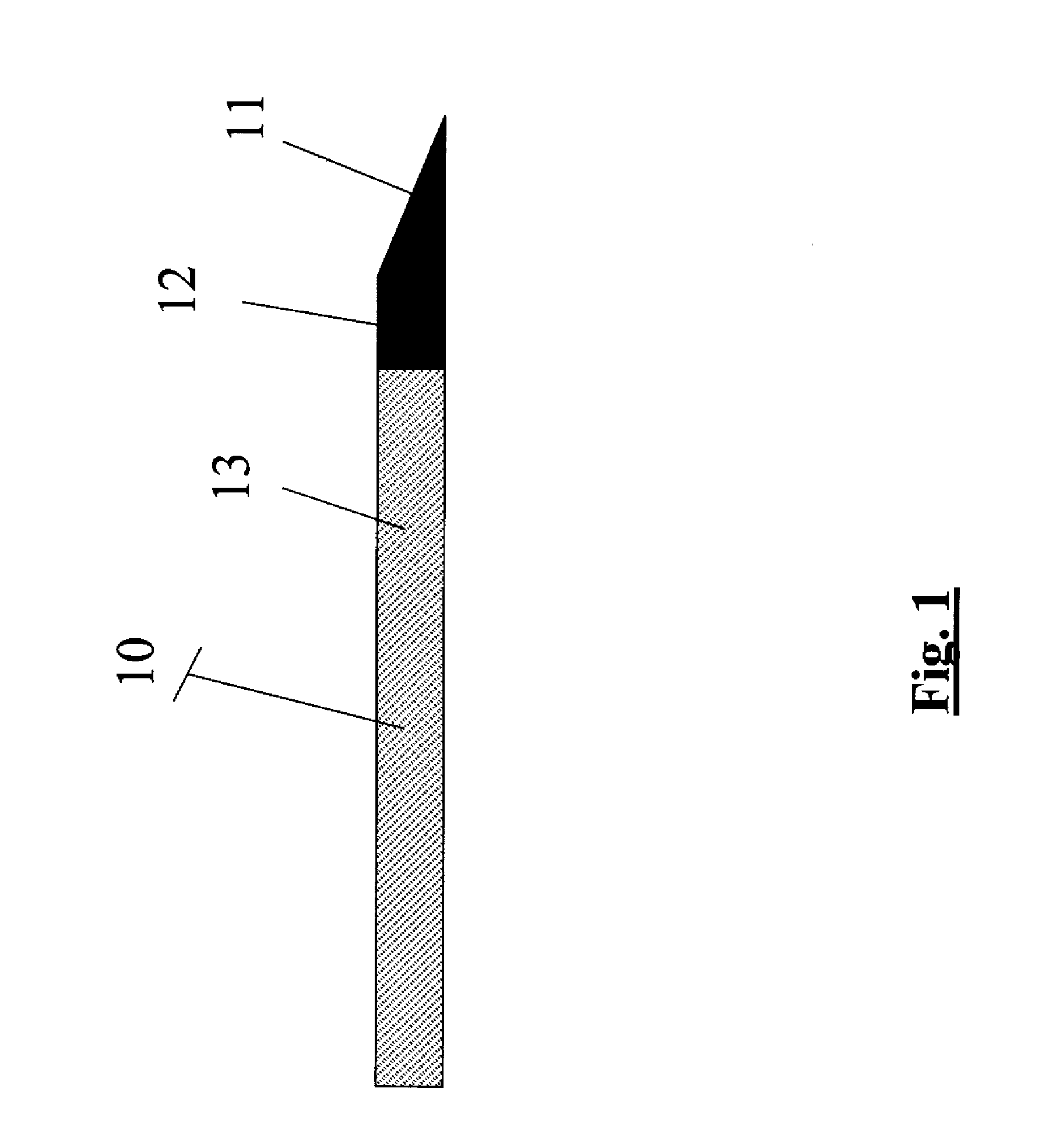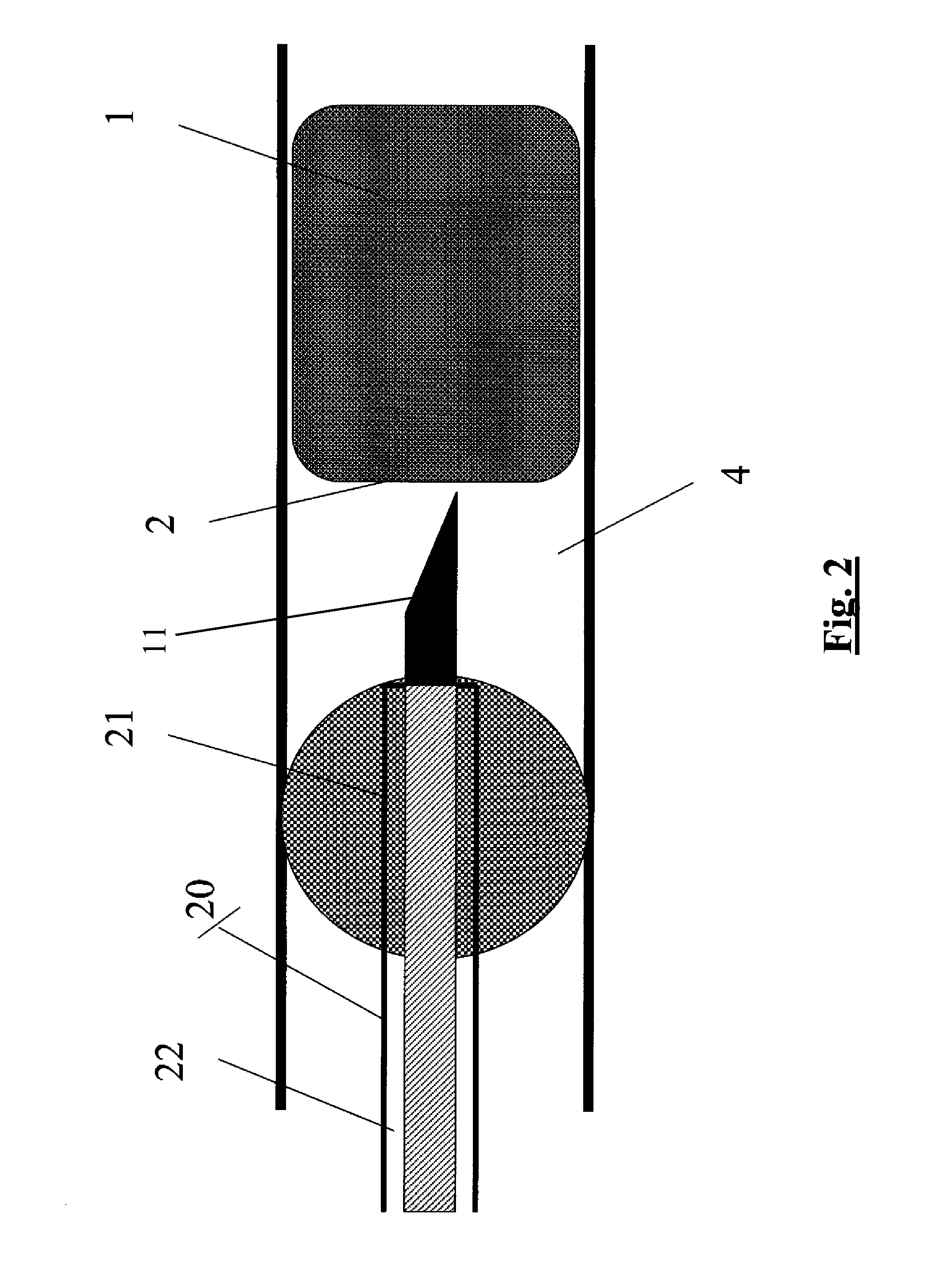Lancet micro-catheter
- Summary
- Abstract
- Description
- Claims
- Application Information
AI Technical Summary
Benefits of technology
Problems solved by technology
Method used
Image
Examples
Embodiment Construction
[0028]Reference is now made to FIG. 1, which illustrates a micro-catheter 10, constructed and operative in accordance with a non-limiting embodiment of the present invention.
[0029]The micro-catheter 10 has a lancet tip 11 at a distal end of a distal section 12, and may be constructed with a hollow lumen through its length. The micro-catheter design provides high flexibility, high pushability and high torqueability, despite its small diameter. The distal end section is hard and sharp, designed to penetrate hard and calcified tissues.
[0030]Reference is now made to FIG. 2. The micro-catheter 10 can be used during CTO percutaneous transluminal recanalization when conventional guide-wires cannot pass an occlusion 1. Usually a proximal cap 2 of the occlusion 1 is penetrated with the hard lancet tip 11, and guide-wires are inserted through the micro-catheter hollow lumen to penetrate the rest of the occlusion. Sometimes the plaque within the diseased blood vessel is hard over the entire le...
PUM
 Login to View More
Login to View More Abstract
Description
Claims
Application Information
 Login to View More
Login to View More - R&D
- Intellectual Property
- Life Sciences
- Materials
- Tech Scout
- Unparalleled Data Quality
- Higher Quality Content
- 60% Fewer Hallucinations
Browse by: Latest US Patents, China's latest patents, Technical Efficacy Thesaurus, Application Domain, Technology Topic, Popular Technical Reports.
© 2025 PatSnap. All rights reserved.Legal|Privacy policy|Modern Slavery Act Transparency Statement|Sitemap|About US| Contact US: help@patsnap.com



